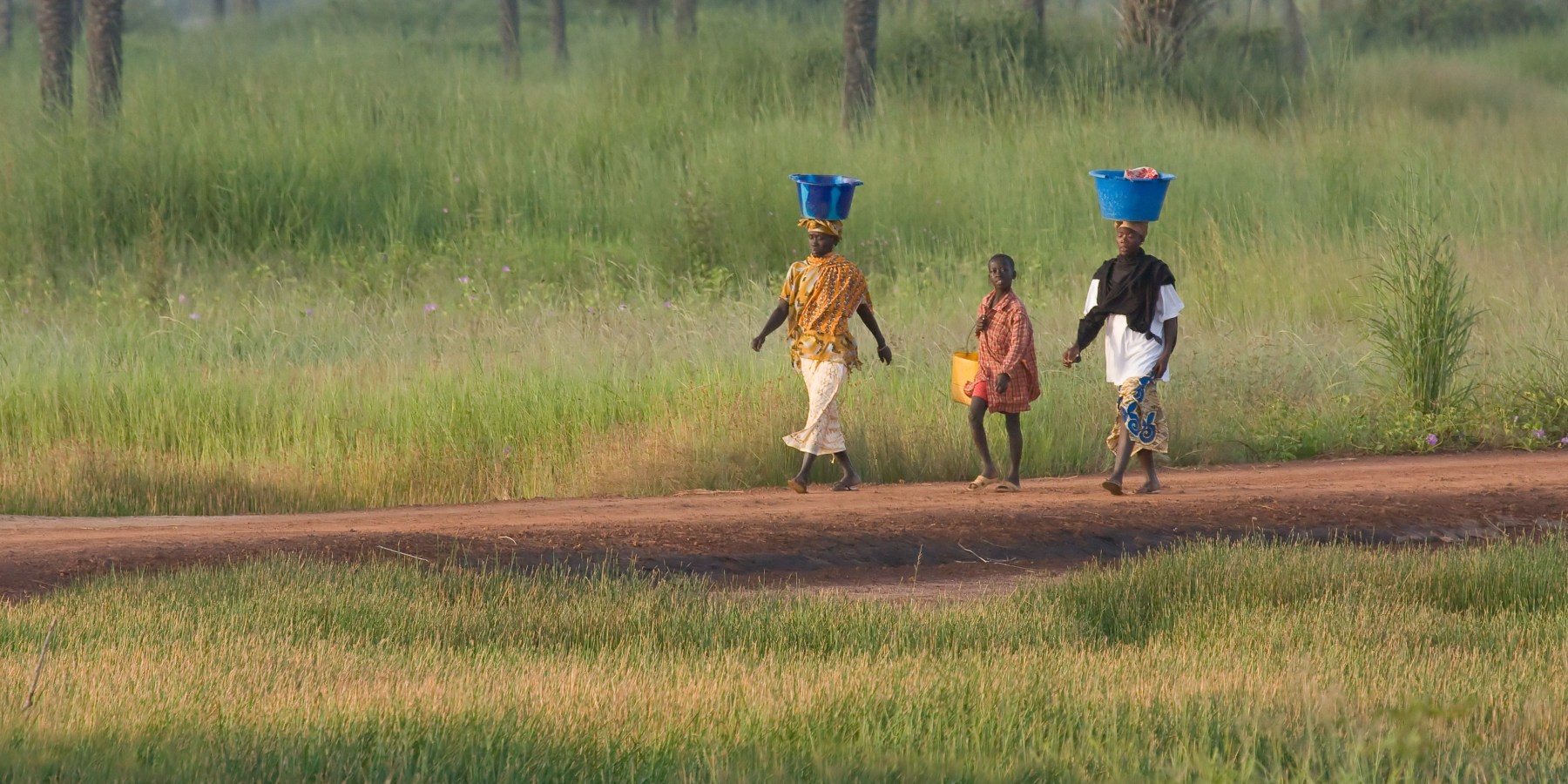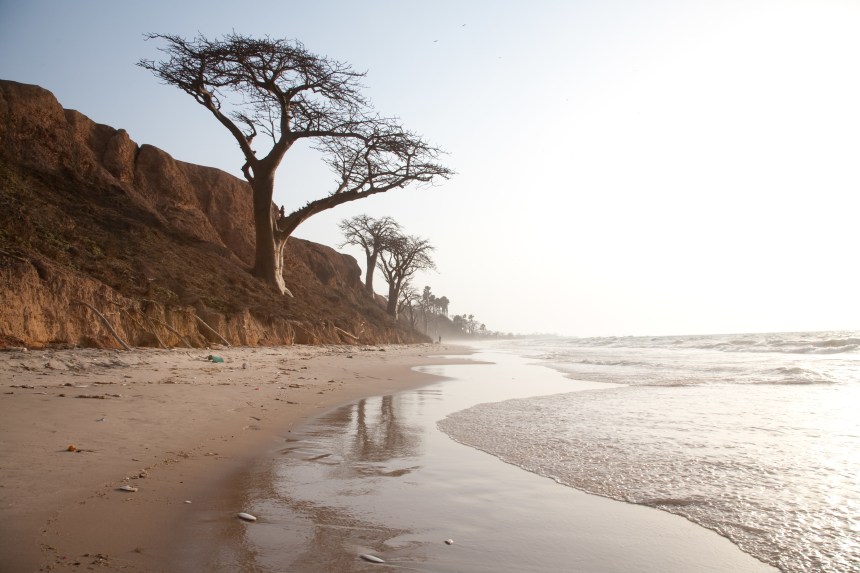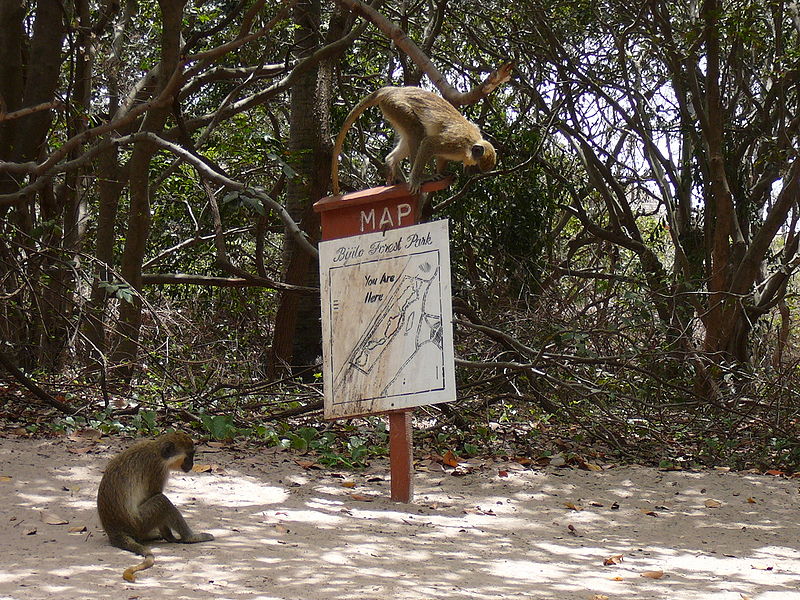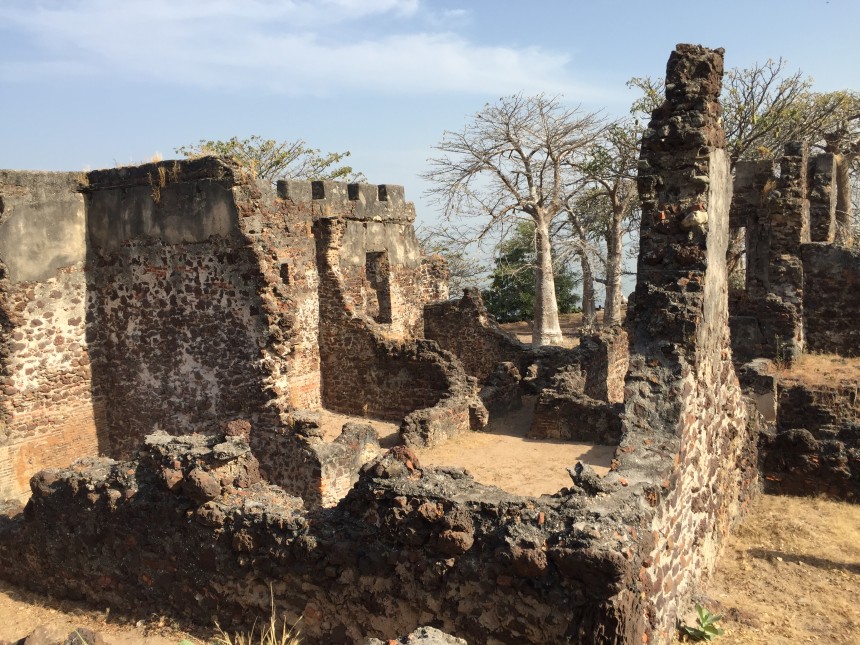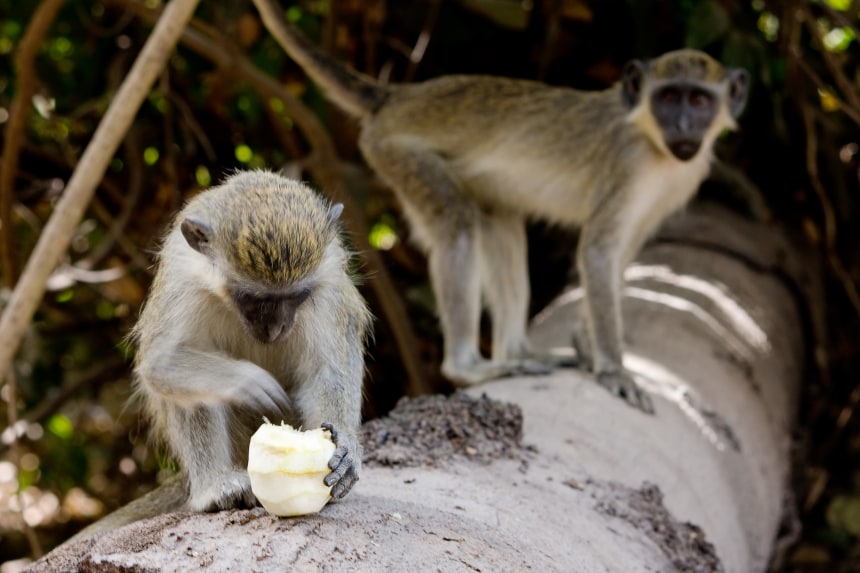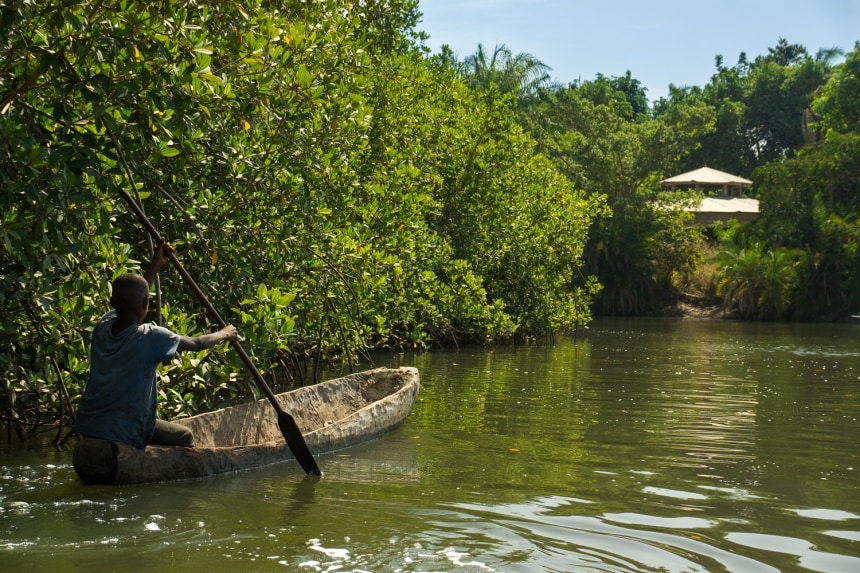| 6 mins read
Ross Cameron
Gambia may be Africa’s smallest country, but its world-class beaches, spectacular wildlife and fascinating history belie its tiny size. Entirely surrounded by Senegal, most locations in Gambia are never more than a short drive from the country’s namesake river, which hosts one of Africa’s most biologically diverse habitats. For those wanting to do more than just scratch the surface of this charming West African nation, this Gambia travel guide will show you the country’s most memorable experiences.
Take a boat tour around Baboon Island
Baboon Island is the beating heart of the River Gambia National Park’s successful Chimpanzee Rehabilitation Centre. While no one (including national park rangers) is allowed to set foot on Baboon Island, daily river cruises around the island will let you get close enough to catch a glimpse of the roughly 100 baboons who call it home. Even if the primates prove to be elusive, the Gambia River is rich with wildlife with knowledgeable national park guides on the cruise, offering the opportunity to spot manatees, crocodiles, hippos and some of the world’s most colourful birdlife.
Soak up the culture of Gambia’s art villages
The villages that nestle in the forests surrounding the Ballabu Wildlife Conservation Area have recently been transformed into one of West Africa’s most spectacular displays of public art. Since 2009, Wide Open Walls, a local art organisation, has been working with regional artists to turn the isolated communities of the conservation area into a vast street art spectacle – once blank mud walls are now bedecked with colourful abstract paintings of the region’s wildlife and traditions, which take inspiration from Gambia’s indigenous artforms. Since its inception, the programme has spread across the area like wildfire and now fourteen villages are covered in upwards of 400 enthralling murals.
Visit unspoilt beaches
Despite having a mere 80 kilometres of coastline, Gambia has some of West Africa’s most spectacular beaches. While those around the bustling resorts of Bakau, Fajara and Kotu Strand are packed with European holidaymakers making the most of the year-round sun, the palm-backed beaches around the picture-perfect towns of Brufut and Ghana Town remain remarkably undeveloped. Once you have explored the rich marine life and watched monkeys cracking coconuts on rocky outcrops, make your way into Brufut to admire the brightly painted fishing boats or Ghana Town to sample mouth-wateringly delicious smoked fish.
Go hiking in the lush hills of Bijilo Forest Park
Just inland from Gambia’s vibrant capital Banjul is the romantic landscape of the Bijilo Forest Park.
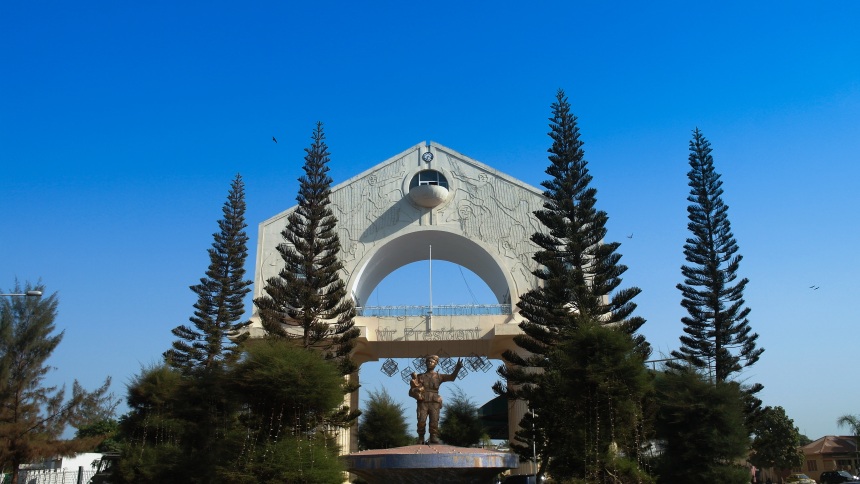
Step back in time and explore Gambia’s traumatic slave trade history
As is the case with almost all of West Africa, Gambia’s history was unfortunately intertwined with that of the slave trade. The best place to get an insight into this dark episode in human history is at the coastal village of Albreda, which was founded as a fortified French slaving outpost. Today the village’s main attraction is undoubtedly the harrowing National Museum that details the gruesome treatment enslaved Africans suffered, and highlights the village’s role in the Alex Hayley’s famous novel Roots. A short boat ride into the Gambian delta from Albreda is the UNESCO World Heritage-listed island of Kunta Kinteh, once better known as Fort James. The harrowing ruins and rusting canons on the island tell of its dark history as one of the British Empire’s most important slave trading outposts while the skeletal baobab trees that line the shore create an unforgettably haunting atmosphere.
Explore Abuko Nature Reserve on foot
Abuko Nature Reserve is unique amongst African wildlife reserves, as you do not need a car but have to walk to explore. Packing an astounding variety of wildlife into its diminutive size, Abuko has one of the world’s densest concentrations of bird species. With around ten kilometres of pathways winding through lush tropical vegetation, visitors are able to get up close to some of the nearly three hundred bird species that inhabit the park while various camouflaged hides have been constructed near watering holes so you can watch the animals without disturbing their natural behaviour. The best time of day to watch the park’s dazzling bird life is during the cacophonous dawn chorus, and expert Abuko guides will help you identify the more unusual species. Beyond the birds, Abuko is famed for its dazzling array of reptilian life, including pythons, green mambas and colossal Nile crocodiles.
Immerse yourself in Gambian culture
To get a better understanding of Gambia’s unique culture, head to the Ndemban Homestay where village elders offer lessons in traditional Gambian cooking, singing, dancing and batik tie-dying. To get a glimpse into entertainment Gambian style stop by a wrestling match, which is the country’s most popular sport. The matches, held everywhere from beaches to huge stadiums and tiny villages, are one of the country’s most thrilling experiences with traditional music and a raucous atmosphere.
Loiter around the Mangroves
The mangrove swamps of Makasutu are a relaxing paradise for wildlife lovers. Designated as a protected area more than a decade ago, the forests are home to a thriving population of baboons and mongoose alongside countless colourful bird species. Once the nature spotting is done for the day, head to one of the reserve’s art villages for hearty portions of jollof rice and peanut stew or barter for locally made arts and crafts and traditional Gambian ingredients in the vibrant local markets.
“Over the past decade, Ross Cameron has traveled extensively across Europe, Southeast Asia, North America, North Africa, and the post-Soviet space. As someone who has a real passion for these regions of the globe, he is able to offer an expert opinion that highlights the best off the beaten track destinations.”
Image details and licenses:
Brufut: https://flic.kr/p/6krxQt (Funky Chickens, CC BY-NC-ND 2.0), Bijilo Forest Park: https://images.app.goo.gl/Ezq3s2NdeWXGJCpx5 (Atamari, CC BY-SA 3.0), Slave Fort: https://flic.kr/p/BrXvU3 (Tjeerd Wiersma, CC BY 2.0), Abuko National Park: https://images.app.goo.gl/Tiap5EHtosm4gKaU7 (Ikiwaner, GNU Free Documentation License)

